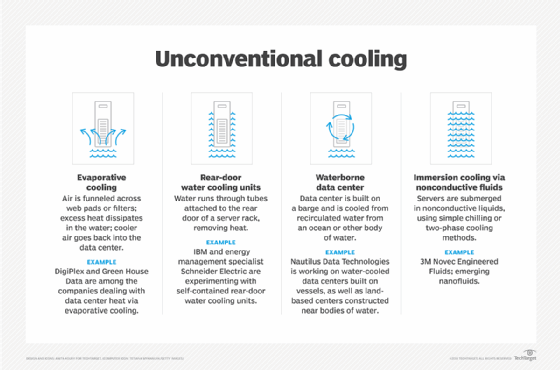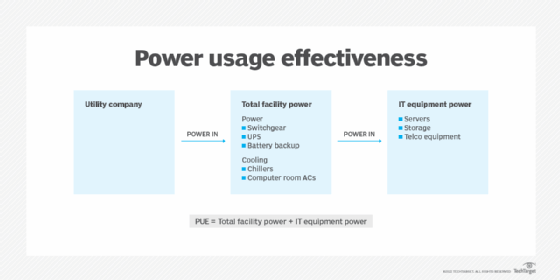economizer
What is economizer?
An economizer is a mechanical device that reduces the amount of energy used to cool a data center or other buildings. It is integrated into the building's heating, ventilation and air conditioning (HVAC) systems, which is why it is sometimes called a HVAC economizer. An economizer uses outside air to help control indoor temperatures and achieve greater energy efficiency.
Economizers are commonly used in data centers to reduce the reliance on cooling devices, such as chillers, compressors or computer room air conditioners. Economizers can help lower a data center's energy consumption and the associated costs, while moving toward a greener computing environment. Economizers can also extend the life of cooling devices, leading to additional savings. They can even improve indoor air quality, depending on the type of economizer.
Economizers offer the greatest benefits in cooler climates, but their use is not limited to cold regions. An economizer can help reduce energy consumption in warmer climates during the cooler months or at night, when temperatures drop. As long as the ambient temperature and humidity are in the desired range, an economizer can be extremely beneficial.
Government bodies and professional organizations, such as ASHRAE, provide recommendations and guidelines for deploying economizers effectively. Among these is the ANSI/ASHRAE/IES Standard 90.1-2019 -- Energy Standard for Buildings Except Low-Rise Residential Buildings, an industry standard for energy-efficient building design. The standard also includes information about the two basic types of economizers: air-side and fluid-side.

What is an air-side economizer?
An air-side economizer is integrated into a building's ventilation system. When the outside temperature and humidity reach the target ranges, the economizer pulls the cooler outside air into the data center and directs the warmer, inside exhaust air outside. In certain circumstances, such as in an extremely cold climate, an economizer might mix exhaust air with outside air to achieve the optimal temperature and humidity level.
The use of an air-side economizer requires that humidity levels be carefully monitored and regulated. It's generally recommended that a data center maintain a relative humidity between 40% and 60%. However, according to a 2020 report from ASHRAE, an environment with high levels of copper and silver corrosion might need to maintain a lower relative humidity, perhaps below 50%.
An air-side economizer includes an automatic control system for adjusting the ventilation dampers that regulate airflow. If the economizer is in a data center, it also usually contains filters to catch particulates that can harm hardware. These filters are installed in the duct that connects the outside environment to the inside of the data center.

What is a fluid-side economizer?
A fluid-side economizer takes a different approach to cooling the data center. Rather than pumping outside air directly into the building, it uses that air to lower the temperature of the coolant within the building's cooling system. This method reduces the need for mechanical refrigeration to lower the coolant's temperature. Common fluids used in fluid-side economizers include water, glycol mixtures and refrigerants. The use of water is why this type of economizer is often called a water-side economizer.
Fluid-side economizers are typically used in data centers with water-cooled or air-cooled chilled water plants. They use the cooling tower's evaporative cooling capacity, making it possible to use the economizer in place of the chiller and, by extension, reduce energy consumption and costs. Water-side economizers often operate at night or during the winter months, taking advantage of cooler ambient air to lower coolant temperatures.
Fluid-side economizers have an advantage over air-side economizers because they're not pumping outside air into the data center. As a result, there is no need to update ventilation systems, maintain air filtration equipment or control humidity levels. However, air-side economizers can be used across a wider range of temperatures, making it possible to run them more frequently and in more locations.
Explore how to design a data center and how to calculate power usage effectiveness.







